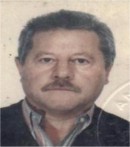
Plenary Lecture
Comparison among Three Different Gasification Reactors

Professor Martino Paolucci
Co-authors: Carlo Borgianni, Paolo De Filippis
SEAR - University “Tor Vergata”
Roma, Italy
E-mail: mpturbine@virgilio.it
Abstract: Thermodinamic calculations were performed in order to evaluate the performance of three different gasification reactors.
The first is a one stage reactor having at the top a catalitic zone consisting of Ni supported on Al2O3 . The injection point of oxydising gases is higher than the one of the feeding of waste and a grate, at the bottom of the reactor, allows that the ashes leave the reactor.
The other two reactor are two-stage reactors. In both, the stage one is equal to the one of the one-stage reactor except the catalitic zone, which is moved to the stage two. The difference of the two two-stage reactors consist of the different way of feeding waste and injectin oxidising gases. En fact the fedeeng of waste is allawed to one reactor only, whilist an oxidising gas can be injected in both the two-stage reactors.
Methane, biogas, RDF, and a blend of RDF and a waste oil are considered the waste fed. The thermal efficiency and the impurities content of the syngas are considered as the most important factors for evaluating all the reactors when the total content of injected oxygen and the amount of fed waste are equal. In terms of thermal efficiency, one-stage reactor and two-stage reactor, wherein the stage two allows the injection of oxygen only, show the same performance while the remained reactor shows worse performance.
As regard the cleaning of the syngas, the two first reactors were considered. In this case the syngas exiting the considered two-stage reactor taken into consideration shows a content of chlorine and sulphur very low, in comparison of the syngas that leaves one-stage reactor.
The possibility of dividing the oxigen in two stage makes the temperature of the first stage lower and that prevent the clorine and sulphur to evaporate and permits that both are eliminated with the ashes.
Brief Biography of the Speaker: He is graduated, industrial chemistry degree, at rome university “la sapienza”. Previously he was a manager in ISPRA (national agency for environmental protection and technical services), Roma - Italy and at present he is a member of SEAR (co-operative society for alternative and renewable energy). Its areas of interest are: renewable and conventional energy; bio-fuels; industrial gas; hydrogen production; thermal and solar reforming. He worked in chemical research laboratories of mines (industry ministry),; after in thermodynamic centre for high temperature – chemical department of rome university “la Sapienza”. During his stay in science faculty rome university “Roma Tre” he studied the optimisation of technical-economic analysis for pyrolysis and gasification processes of poor fuels such as industrial and civil organic wastes, rural biomass. After 2003, he worked at ISPRA in co-operation with chemical department of Roma University “La Sapienza” and mechanical engineering department of University ”Roma Tre”, on innovative gasification process development for biomass, optimisation of a innovative reactor at two stage with biomass (rural, industrial and civil waste) to reduce tar content, and increase the cleanness of the obtained syngas. He is also co-author of papers on: renewable energies, biomass, biogas, new technologies of gasification;gas treatment; utilisation of organic waste, landfill biogas, and photo-electro-chemistry process for hydrogen production.